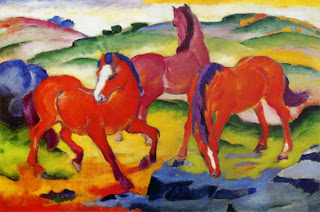3 Class Periods
 |
| Winslow Seascapes, Third Grade Art Lesson
|
Winslow Homer (1836-1910) is a self-taught American landscape painter and printmaker. He is considered a Realist artist. He began his career by illustrating pictures for Harper magazine and sketching battle scenes during the Civil War (1863). Homer began traveling in 1875. He fell in love with the sea and spent the rest of his life painting seascapes.
 |
| Winslow Homer The Fog Warning by Winslow Homer. |
- Students prepped their paper by painting it with cool hues to create an ocean. Several resist techniques were discussed in class to help create textures within the painting.
Day 2
- Discuss with students the texures created on their paintings.
- Demonstrate to students how to tear paper and glue it onto blue construction paper to create waves.
- Show students how to create boats.
 |
| Student creating a boat. |
- Have students add a mosaic design and sails to boats.
- Students may add extra embellishments if they see fit for their compositions.
Examples of Student Work:



















































